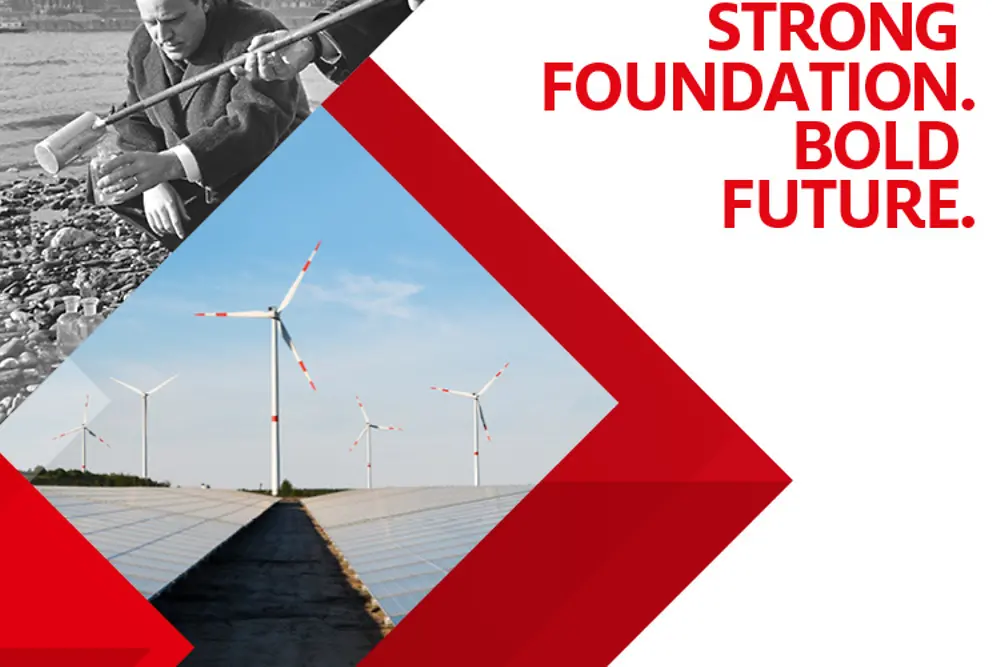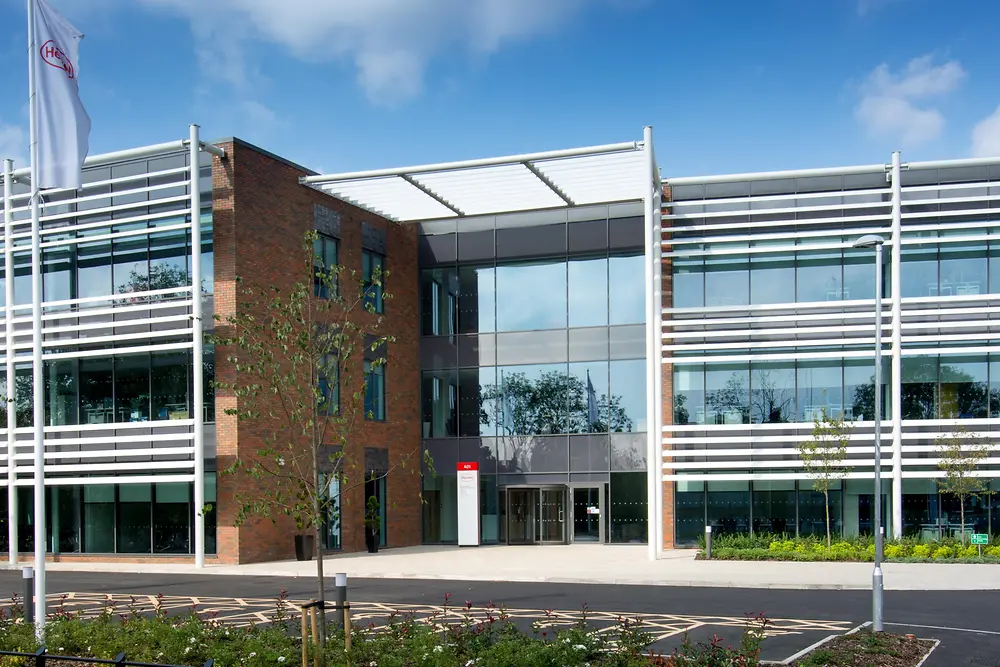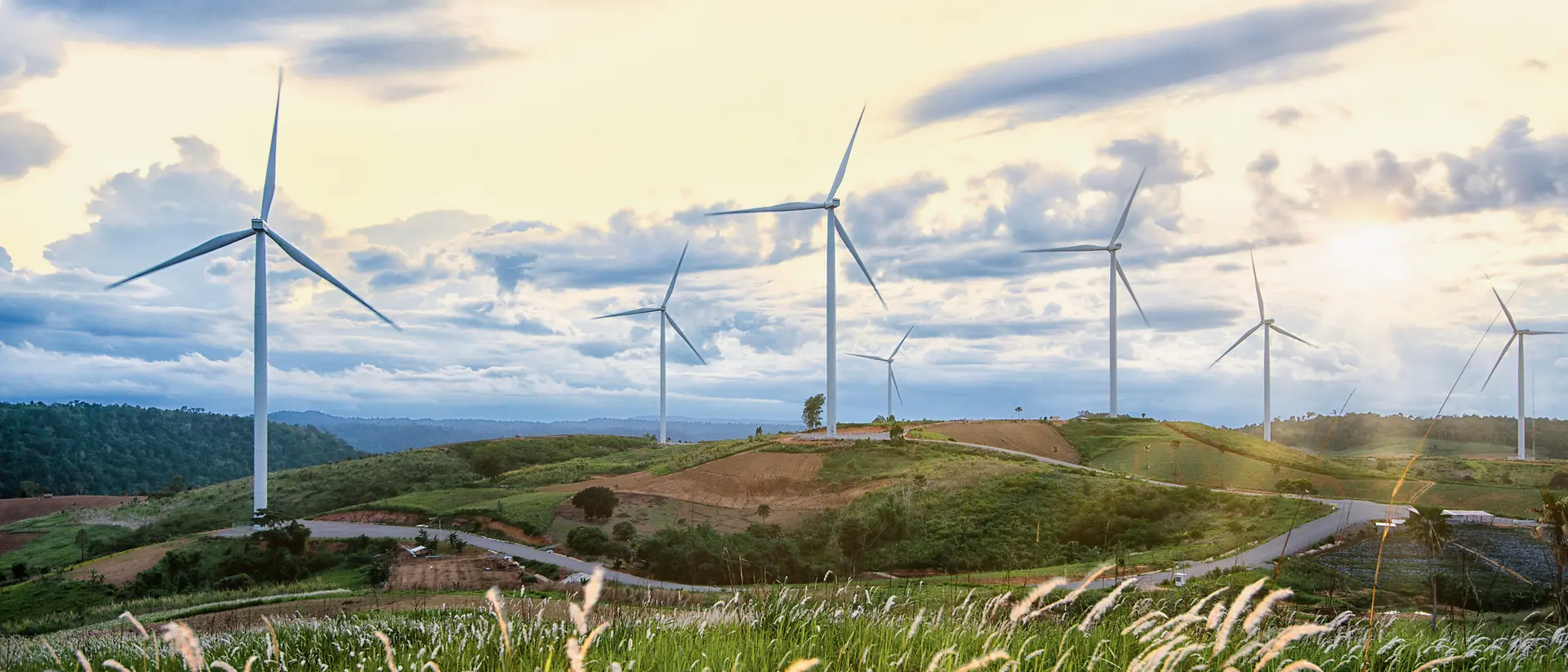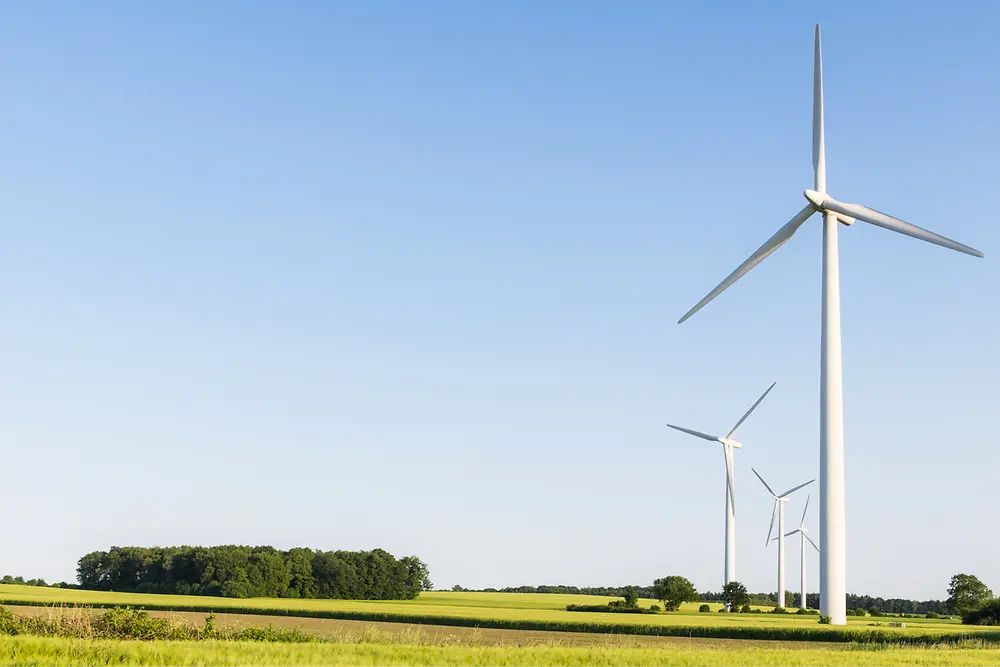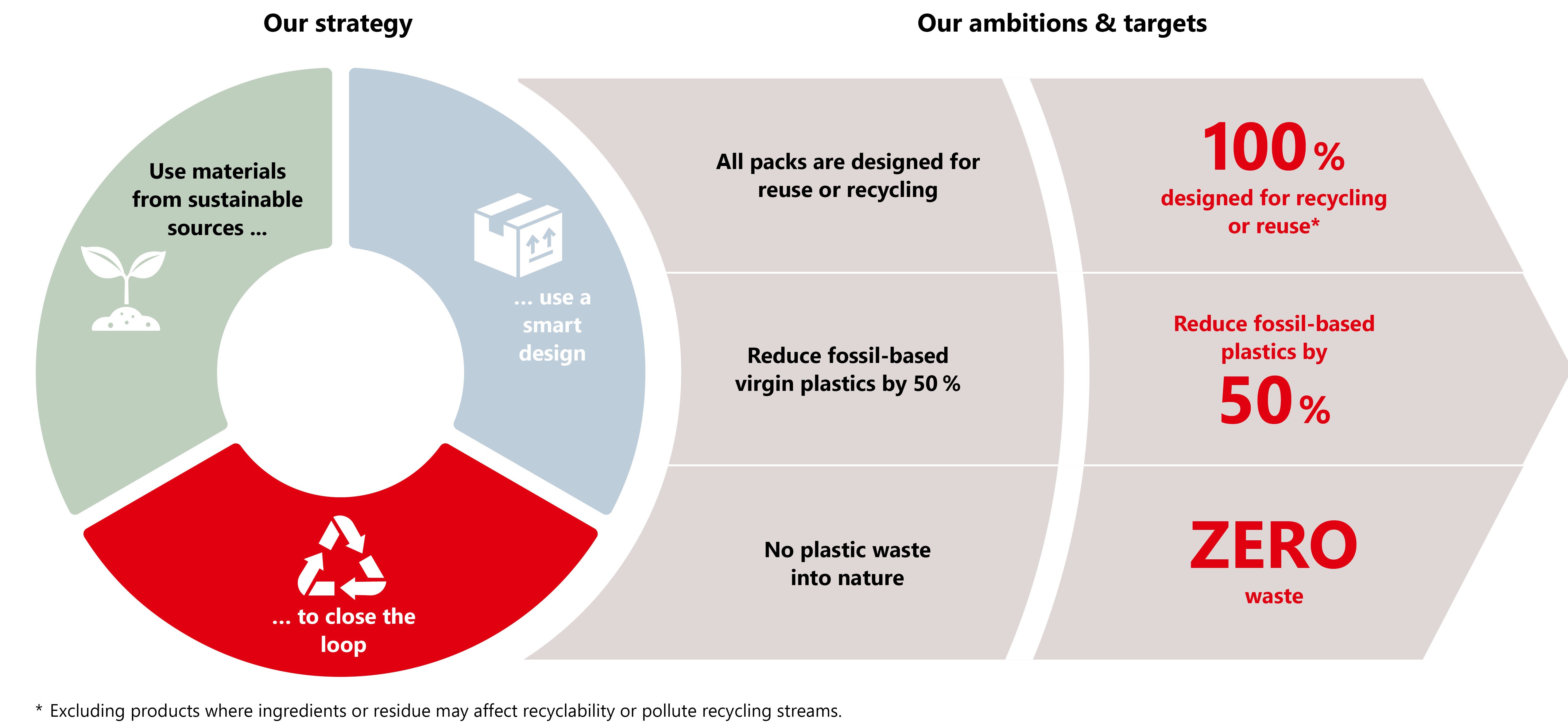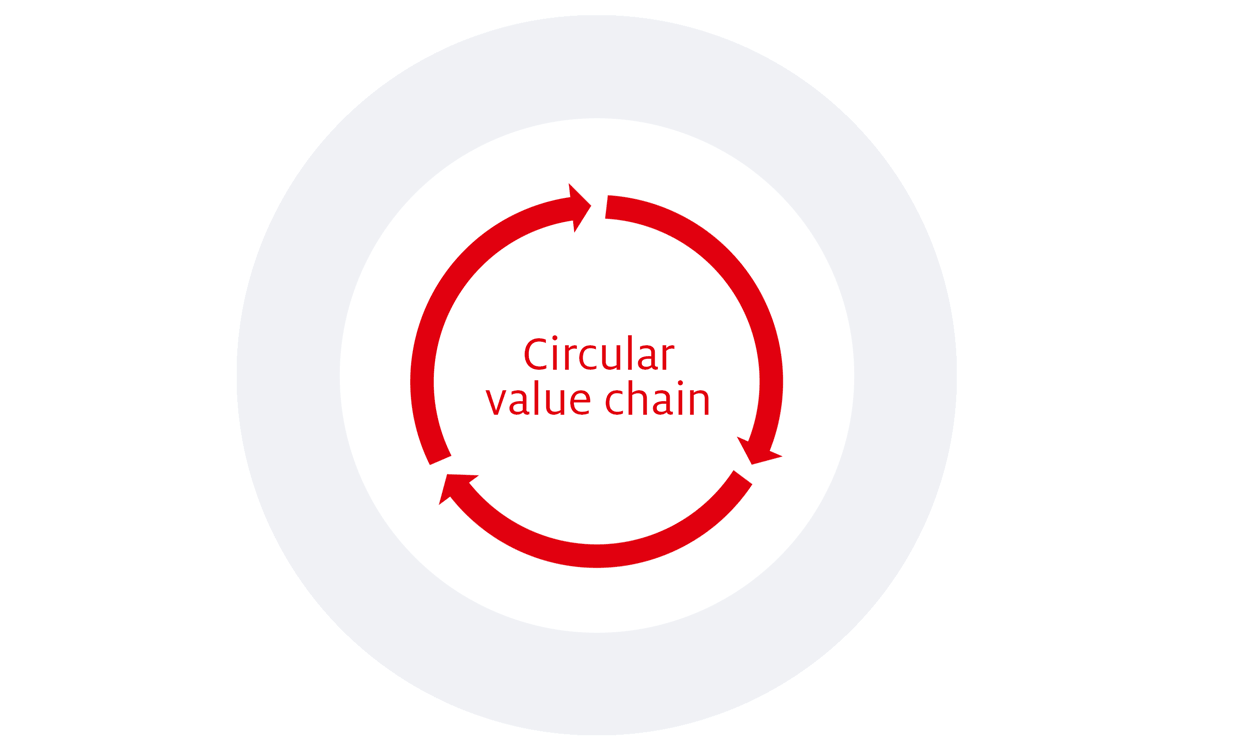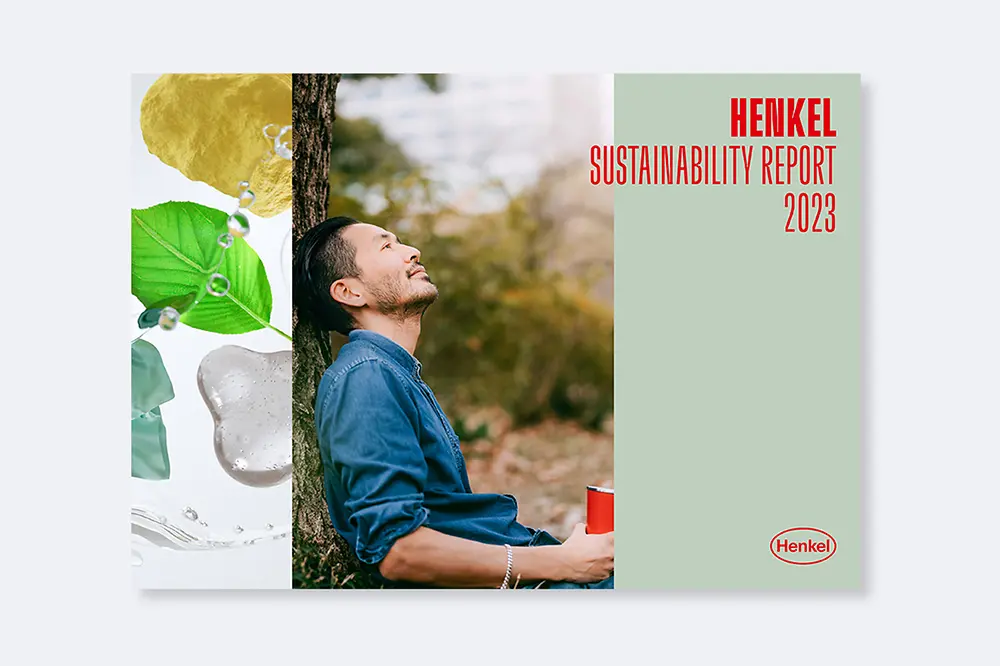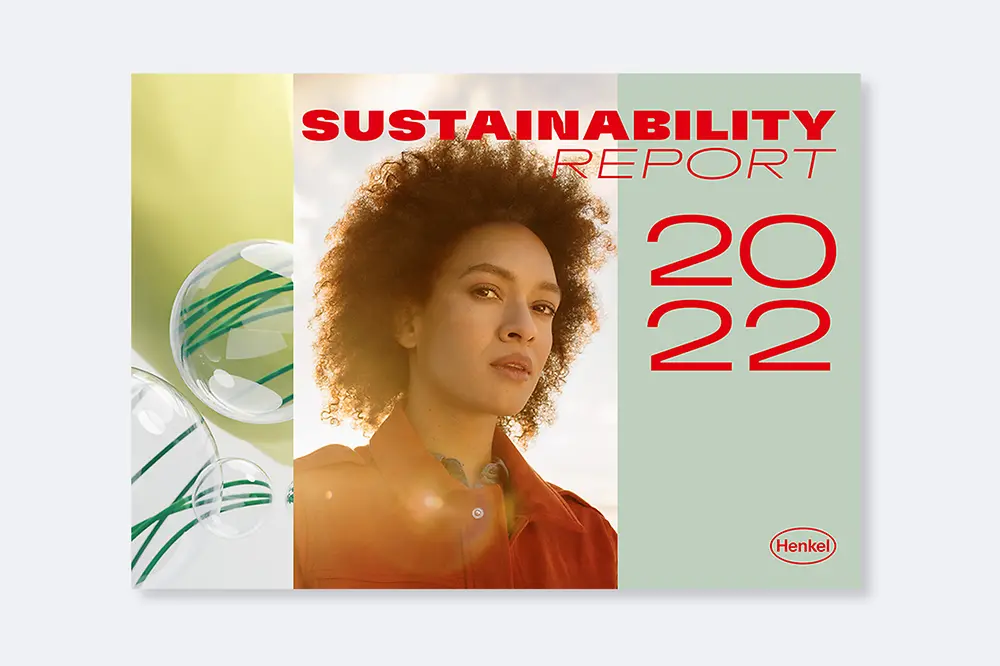Learn more about Henkel Brands & Businesses in UK & Irelands: Includes useful information about the brands, technologies and latest innovations in our business areas: Henkel Adhesive Technologies and Henkel Consumer Brands.
Sustainability
The commitment to sustainability has been an integral part of Henkel's corporate culture for decades. As a leader in sustainability, we aim to pioneer new solutions for sustainable development while continuing to shape our business responsibly and increase our economic success. This ambition encompasses all of our company’s activities – along the entire value chain.
2030+ Sustainability Ambition Framework
Henkel’s sustainability strategy is a direct reflection of the company’s commitment to “Purposeful Growth”. We are committed to creating more value for our stakeholders, developing our business responsibly and successfully, and building on our leading role in sustainability.
Our new sustainability strategy revolves around implementing our ambitions through concrete measures and projects to achieve practical progress. With our 2030+ Sustainability Ambition Framework, we have developed new long-term ambitions in the three dimensions of Regenerative Planet, Thriving Communities and Trusted Partner to drive further progress.
OUR PURPOSE
Pioneers at heart for the good of generations.
⏷
TRANSFORMATIONAL IMPACT FOR THE GOOD OF GENERATIONS
![]()
REGENERATIVE PLANET
We strive to achieve a circular economy, a net-zero future and the regeneration of nature.
![]() CLIMATE
CLIMATE
Become a net-zero business by decarbonizing our operations and raw materials.
![]() CIRCULARITY
CIRCULARITY
Advance circularity through our products, packaging and technologies.
![]() NATURE
NATURE
Protect and restore biodiversity with a focus on forests, land and water, and ensure responsible resource stewardship.
Products
![]()
THRIVING COMMUNITIES
We actively contribute to people being able to lead a better life through our business and brands.
![]() EQUITY
EQUITY
Strengthen diversity, equity and inclusion, respect human rights and enhance the livelihoods of people.
![]() EDUCATION
EDUCATION
Support lifelong learning and education, and motivate people to take action for sustainability.
![]() WELLBEING
WELLBEING
Foster health and wellbeing, and help drive social progress.
People
![]()
TRUSTED
PARTNER
We are committed to product quality and safety while ensuring business success with integrity.
![]() PERFORMANCE
PERFORMANCE
Reliably deliver best-in-class product performance and safety as the foundation of our business success.
![]() TRANSPARENCY
TRANSPARENCY
Integrate sustainability into our business governance with transparent reporting, disclosure and engagement.
![]() COLLABORATION
COLLABORATION
Scale sustainability impact with our partners, leading to responsible business practices in our supply chains.
Partnerships
Regenerative Planet
We are on a journey towards an environmental transformation of our business model. To achieve this ambition, we intend to transform our processes, products and use of raw materials in the direction of a resource-efficient, net-zero future. We are focusing on climate change mitigation measures, a functional circular economy, and the protection of nature and biodiversity.
Climate
Become a net-zero business by decarbonizing our operations and raw materials.
- Henkel has defined a net-zero plan that goes hand in hand with extended targets for reducing emissions along the value chain.
- To reach net-zero, Henkel commits to the following targets, which were validated by the Science-Based Target initiative (SBTi):
- reduction of absolute Scope 1 and 2 greenhouse gas (GHG) emissions by 42 percent by 2030 (base year: 2021)
- reduction of absolute Scope 3 GHG emissions by 30 percent by 2030 (base year: 2021)
- reduction of absolute Scope 1, 2 and 3 GHG emissions by 90 per cent by 2045 (base year: 2021).
- To mitigate direct emissions at its own sites, Henkel will continue to increase its energy efficiency and cover the remaining energy needs more and more with renewable energy sources. The share of purchased electricity that Henkel obtains from renewable sources is already at 89 percent worldwide.
Circular Economy
We have set ourselves ambitious targets as part of our packaging strategy and have already made much progress in the area of sustainable packaging.
Our packaging targets for 2025
- 100 percent of Henkel’s packaging material will be designed for recyclability and reusability*.
- We aim to reduce the amount of virgin plastic from fossil sources in our consumer products by 50 percent. We will achieve this by increasing the proportion of recycled plastic to more than 30 percent, by reducing the plastic volume, and by using bio-based plastics.
- Henkel wants to help prevent waste from entering the environment. That is why we support waste collection and recycling initiatives. We invest in innovative solutions and technologies to promote closed-loop recycling, and we aim to enable contact with more than 2 billion consumers per year by providing targeted information about recycling.
By the end of 2021, 86 percent of Henkel's packaging was already recyclable or reusable* and the proportion of recycled plastic in its consumer goods packaging was 18 percent globally.
Initiatives and partnerships
Progress towards sustainability in packaging is only possible if companies along the entire value chain work together. Therefore, Henkel is engaged in various partnerships and cross-industry initiatives. A few examples:
- We participate in the New Plastics Economy initiative of the Ellen MacArthur Foundation, which brings together stakeholders to rethink the future of plastics and provide ideas to foster a circular economy.
- In the Plastic Waste Coalition of Action, which was formed from the Consumer Goods Forum (CGF) in 2020, Henkel is working with other companies on the basis of Golden Design Rules to develop a more circular approach to the design and processing of plastic packaging in the consumer goods industry.
Nature
Protect and restore biodiversity, with focus on forests, land and water, through more regenerative ingredients and resource stewardship:
- We are committed to sourcing our raw materials sustainably and not through deforestation. Our goal is to prevent the deforestation of primary and secondary forests with significant ecological value.
- By 2025, we want to cover 100 percent of our demand for palm oil and palm kernel oil with oils that are certified or externally confirmed as responsibly sourced.
- In addition, we have set ourselves the goal of reducing water consumption per ton of product by 35 percent by 2025. By the end of 2021, we had saved 28 percent.
Thriving Communities
We will help people live better lives. Our social responsibility is to promote equal opportunity, strengthen diversity and respect human rights. We offer our employees lifelong learning opportunities, and an attractive and healthy working environment. We advocate for social progress and access to education worldwide, and we provide assistance in emergency situations.
Equity
Strengthen Diversity & Inclusion, respect human rights and enhance the livelihoods of people:
- We are convinced that a diversified workforce, as well as an open and appreciative corporate culture, are important success factors in a globalized world.
- Our goal is to continuously increase the ratio of women in the company at all levels, and we have the ambition to achieve gender parity across all management levels by 2025.
- Additionally, we want to improve livelihoods of smallholders. Together with the development organization Solidaridad, we have so far been able to reach around 36,400 smallholder farmers who cultivate around 340,000 hectares of land.
Education
Support lifelong learning and education of employees and communities and enable consumers to take action for sustainability:
- We want to further promote our employees' commitment to sustainability and have expanded our existing training offerings to include a holistic engagement program.
- We also want to motivate and encourage our employees to actively engage in sustainability in their work environment and in their private lives.
- In addition, we are committed to further expand our community education programs and volunteering. We have already exceeded our overarching goal of reaching 20 million people through this engagement by 2025. Since 2010, we have reached more than 26 million people. For 2030, we have set the new target to contribute to improving the lives of 30 million people (base year 2010) worldwide.
Wellbeing
Foster health and wellbeing of employees, partners and consumers, and help drive social progress through our brands:
- We strengthen the health and vitality of our employees as the basis for an agile and efficient organization. To this end, we apply uniform global standards for health protection and offer targeted health promotion and prevention programs. As a key objective of our sustainability strategy, we aim to reach more than 90 percent of our employees worldwide.
- We remain focused on our long-term objective of zero accidents and want to improve our occupational safety by 60 percent by the end of 2025 compared to 2010. We have anchored this overarching goal as a key performance indicator in our new sustainability strategy. In 2021, we recorded 0.7 occupational incidents per million hours worked by our employees. This is an improvement of 42 percent over the base year 2010.
Trusted Partner
We draw on our value-oriented corporate culture and our scientific and technological expertise to strengthen our performance while maintaining our integrity. We deliver safe and best-in-class product and technology solutions to our customers and consumers. We integrate sustainability in our portfolio and in our business processes, and provide transparent reporting on this to our stakeholders.
Performance
Deliver best-in-class product performance and chemical safety for our customers and consumers, as foundations of our business success:
- Every new product makes a contribution to sustainability.
- Our goal for 2030 is to triple the value created relative to the environmental footprint of our operations. The efficiency improvement totaled 74 percent in 2021 (compared to the base year 2010).
Transparency
Integrate sustainability in our business governance, processes and policies with transparent reporting, disclosure and engagement:
- One of our palm oil targets for 2025 is to establish full transparency and traceability for palm (kernel) oil. In 2021, we increased the traceability rate to the mill to 84 percent and the traceability rate to the plantation to 42 percent by engaging with our suppliers to map our joint palm-based supply chain.
Collaboration
Scale sustainability impact with our partners, leading to responsible business practices in our supply chains:
- In our ambition, we commit to 100 percent responsible sourcing together with our partners.
*Excluding products where ingredients or residue may affect recyclability or pollute recycling streams.

